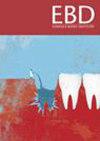A comparative review of the oral microbiome in clear aligners and fixed orthodontic appliances
IF 2.3
Q3 Dentistry
引用次数: 0
Abstract
Lucchese A, Marcolina M, Mancini N et al. A comparison of the alterations of oral microbiome with fixed orthodontic therapy and clear aligners: a systematic review. J Oral Microbiol 2025; 17: 2372751. The review searched multiple electronic databases (PubMed, Cochrane Library, Embase, Web of Science, Scopus, Ovid, Dentistry and Oral Sciences Source) and gray literature (OpenGray) up to May 30, 2023. The selection of the studies was processed according to PRISMA guidelines. Two reviewers independently screened titles and abstracts, with disagreements resolved by a third reviewer. Full-text articles were then assessed for eligibility based on pre-defined inclusion/exclusion criteria (RCTs, nRCTs, cohort studies; at least two time points for analysis; minimum 10 patients; clear aligners vs. fixed appliances or comparison between them; patients with good systemic health not taking medications). Data extraction from the included studies was carried out by two reviewers in consultation with a third reviewer to define the variables for extraction and resolve any disagreements. Extracted data included study characteristics (author, year, design, sample size, patient age), intervention details, sample collection methods (saliva, plaque), microbial analysis methods (16S rRNA sequencing, PCR, BANA test), and microbiological outcomes. A qualitative synthesis was performed due to the heterogeneity of the included studies, precluding meta-analysis. A total of 484 articles were identified, with 9 studies that met the inclusion and exclusion criteria: eight non-randomized controlled trials and one randomized controlled trial. Sample sizes ranged from 10 to 77 participants. Various microbial analysis methods were employed, including 16S rRNA gene sequencing (5 studies), PCR (3 studies), and the BANA test (1 study). Following the application of rating scales, 1 article was classified as having a low risk of bias, 6 as having a moderate risk, and 2 as having a serious risk of bias. The review suggests that clear aligners may be associated with a less detrimental impact on the oral microbiome compared to fixed appliances, possibly due to improved oral hygiene. Both therapies alter the oral microbiome; however, the changes caused by aligners are more conducive to better oral health compared to fixed appliances.清洁矫正器与固定正畸矫治器口腔微生物组的比较研究。
评述:Lucchese A, Marcolina M, Mancini N等。固定正畸治疗和透明矫正器口腔微生物组变化的比较:一项系统综述。口腔微生物学杂志;17: 2372751。数据来源:本综述检索了截至2023年5月30日的多个电子数据库(PubMed, Cochrane Library, Embase, Web of Science, Scopus, Ovid, Dentistry and Oral Sciences Source)和灰色文献(OpenGray)。研究选择:根据PRISMA指南对研究进行选择。两位审稿人独立筛选标题和摘要,分歧由第三位审稿人解决。然后根据预先定义的纳入/排除标准评估全文文章的合格性(rct、nrct、队列研究;至少两个时间点进行分析;最少10名患者;明确对准器与固定器具或两者之间的比较;全身健康,不服用药物的患者)。数据提取和综合:从纳入的研究中提取数据由两名审稿人在与第三名审稿人协商后进行,以确定提取的变量并解决任何分歧。提取的数据包括研究特征(作者、年份、设计、样本量、患者年龄)、干预细节、样本收集方法(唾液、菌斑)、微生物分析方法(16S rRNA测序、PCR、BANA检测)和微生物学结果。由于纳入研究的异质性,排除了meta分析,进行了定性综合。结果:共纳入484篇文献,9项研究符合纳入和排除标准:8项非随机对照试验和1项随机对照试验。样本量从10到77人不等。采用多种微生物分析方法,包括16S rRNA基因测序(5项研究)、PCR(3项研究)和BANA检测(1项研究)。应用评定量表后,1篇文章被分类为低偏倚风险,6篇文章被分类为中等偏倚风险,2篇文章被分类为严重偏倚风险。结论:该综述表明,与固定矫治器相比,透明矫正器可能对口腔微生物群的有害影响较小,这可能是由于改善了口腔卫生。这两种疗法都能改变口腔微生物群;然而,与固定矫治器相比,矫正器带来的改变更有利于口腔健康。
本文章由计算机程序翻译,如有差异,请以英文原文为准。
求助全文
约1分钟内获得全文
求助全文
来源期刊

Evidence-based dentistry
Dentistry-Dentistry (all)
CiteScore
2.50
自引率
0.00%
发文量
77
期刊介绍:
Evidence-Based Dentistry delivers the best available evidence on the latest developments in oral health. We evaluate the evidence and provide guidance concerning the value of the author''s conclusions. We keep dentistry up to date with new approaches, exploring a wide range of the latest developments through an accessible expert commentary. Original papers and relevant publications are condensed into digestible summaries, drawing attention to the current methods and findings. We are a central resource for the most cutting edge and relevant issues concerning the evidence-based approach in dentistry today. Evidence-Based Dentistry is published by Springer Nature on behalf of the British Dental Association.
 求助内容:
求助内容: 应助结果提醒方式:
应助结果提醒方式:


